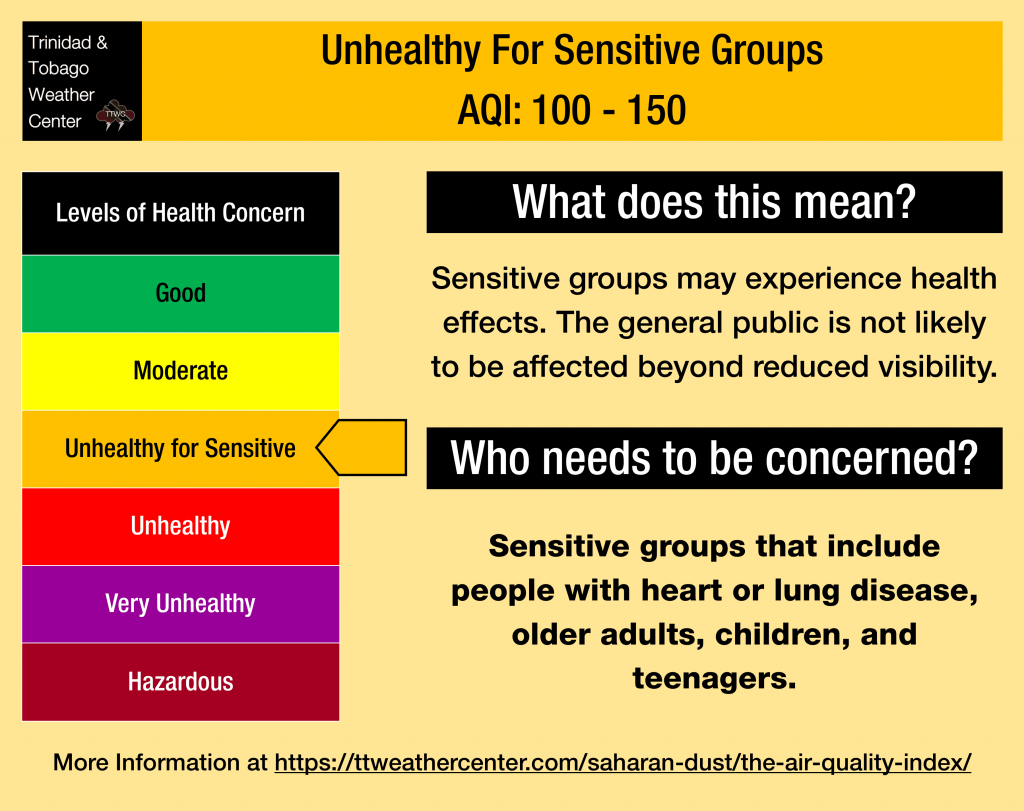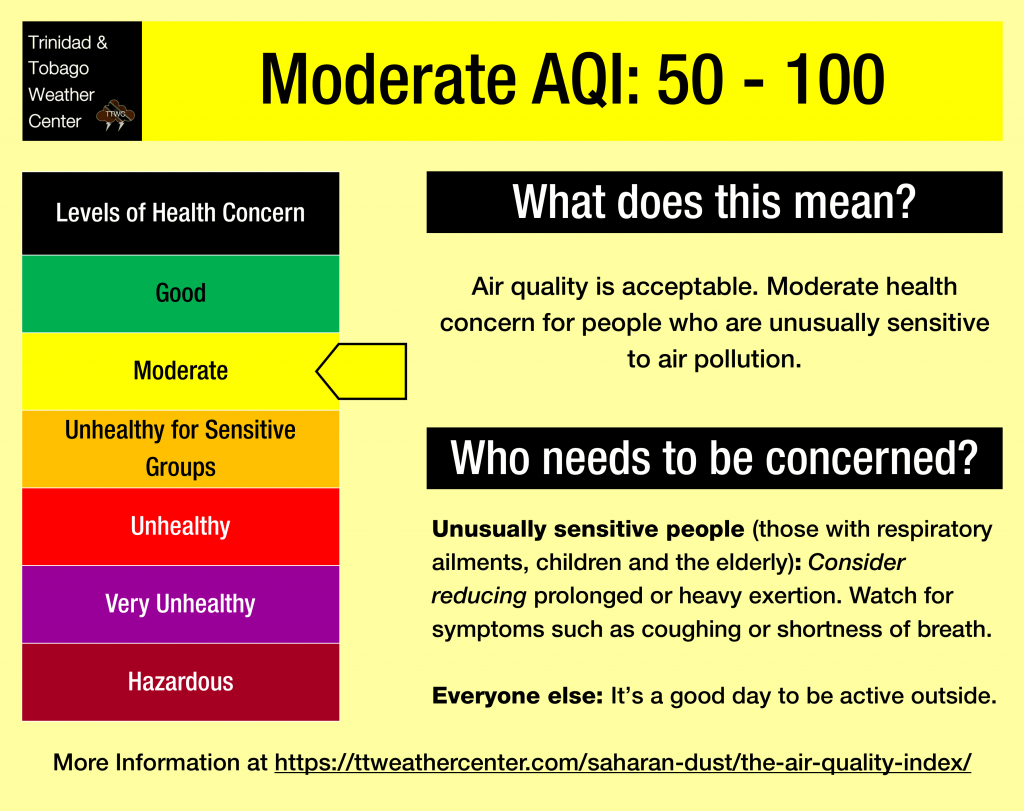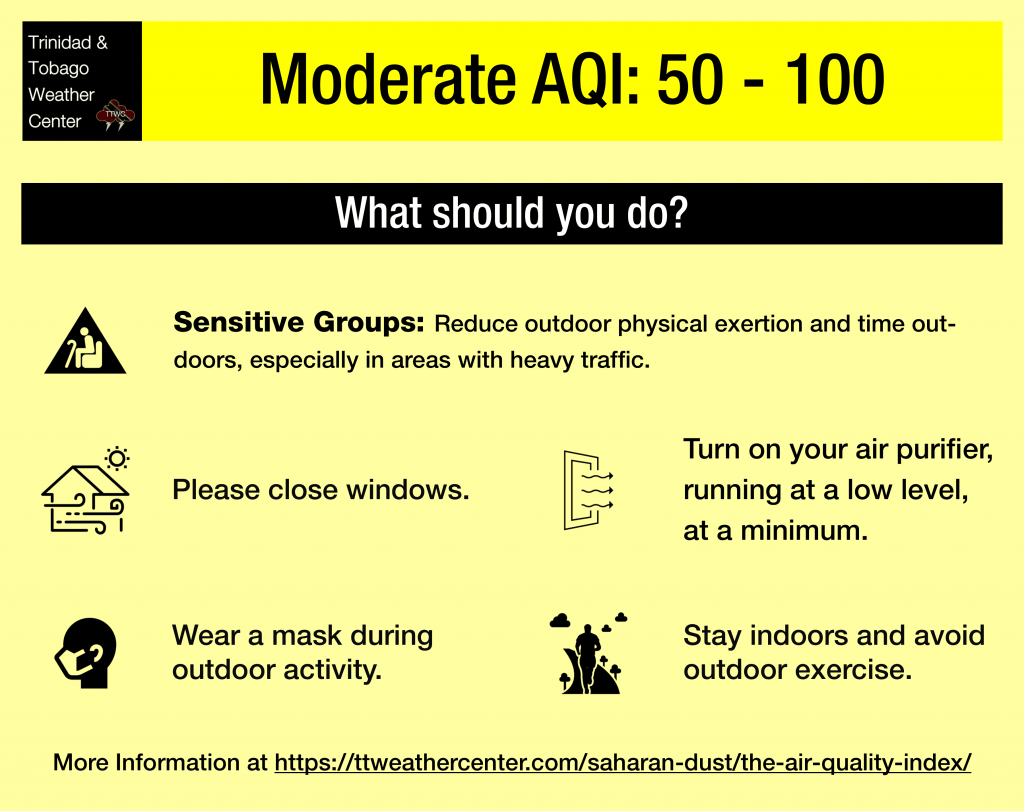Air quality levels are gradually improving across Trinidad and Tobago as Tropical Wave 04 nears the region. However, over the next several days, Saharan Dust concentrations are forecast to fluctuate across Trinidad and Tobago due to the passage of Tropical Wave 05 on Wednesday and Tropical Wave 06 on Friday into Saturday. Further north, moderate to high concentrations will continue to persist in the remainder of the Lesser Antilles.
What you need to know
— Saharan Dust Surges: The significant surge of Saharan Dust is moving away from Trinidad and Tobago, with still moderate to high concentrations but decreasing through tonight (Monday night), While improvement is forecast through the week, generally mild to moderate Saharan Dust levels are expected across T&T, even with rainfall episodes over the next seven days.
— Impacts: Air quality is expected to gradually improve over the next 24 hours, returning to moderate levels by Tuesday and generally remaining between good and moderate levels thereafter through June 18th.
— What Should You Do: Throughout the forecast period, mainly from Tuesday, unusually sensitive groups are advised to take necessary precautions.
Current AQI Levels Across T&T


As of 4:00 PM, June 9th, 2025, the official air quality monitoring stations from the Environmental Management Agency (EMA) at Beetham outside of Port of Spain, Point Lisas, and San Fernando report air quality that are unhealthy for sensitive groups while all other stations (Signal Hill, Toco, Arima) are not currently transmitting PM2.5 or PM10 data.
Unofficial air quality monitoring stations at Longdenville and Woodbrook report air quality levels that are good to moderate.
These measurements are based on PM2.5 (particulates smaller than 2.5 micrometers in size, typically associated with increases in Saharan Dust, vehicle exhaust, and smoke) and PM10 particulates.
Outside of rainfall, visibility, used as a proxy for Saharan Dust concentrations, at the A.N.R. Robinson International Airport at Crown Point, Tobago, and Piarco, fluctuates between 6 and 10 kilometers.
Saharan Dust Forecast For T&T

Remainder of June 9th through June 10th: High but decreasing concentrations of Saharan Dust with air quality and visibility degraded. Air quality levels are likely to improve from unhealthy for sensitive groups to moderate. Horizontal visibility outside of rainfall is expected to range from 8 to 10 kilometers.
June 10th through June 19th: Mild to moderate concentrations of Saharan Dust with air quality generally at good to moderate levels. Visibility marginally affected.

What does this mean for you?
Beyond June 10th, air quality is forecast to remain generally at moderate levels, with only the most sensitive groups marginally affected.


We’re now in a period where the Intertropical Convergence Zone, tropical waves, and occasional tropical cyclones may shield Trinidad and Tobago from the Saharan Dust events. While tropical waves are notable in moving dust across the Atlantic and the Eastern Caribbean, these periodic tropical waves also improve air quality.
Peak dust concentrations climatologically occur during June across the Main Development Region of the Atlantic, just east of Trinidad and Tobago.

The concentration of the dust that follows the wave depends on its strength as it moves off the West African Coast. This is because of stronger thunderstorms across Central Africa. As strong winds move downward and outward from these thunderstorms, they kick up dust as they move across parts of the Saharan Desert and transport it into the upper atmosphere. This “plume” of dust follows the axis of the wave as it progresses westward into the Atlantic.
Dust that enters the upper levels of the atmosphere can then be transported across the Atlantic Ocean. The plumes of dust eventually affect the Eastern Caribbean.
Larger, more concentrated plumes of Saharan dust begin in April and continue through November.










